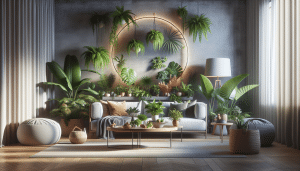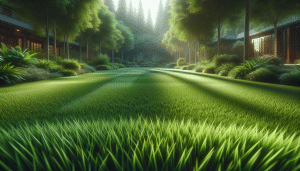You Won’t Believe These Backyard Landscape Ideas
Henry King October 18, 2025
Ready to transform your backyard? This guide unlocks surprising landscape ideas and practical tips to create an inviting space. Whether you’re considering native plant designs, drought-tolerant gardens, low-maintenance landscaping, or eco-friendly features, discover concepts to inspire your next outdoor refresh.
Unlocking the Potential of Your Outdoor Space
Reimagining a backyard isn’t just about aesthetics—it’s about functionality and enjoyment. Many homeowners wonder how to create a space that feels both relaxing and useful. With backyard landscape ideas centered around practical design, every corner can serve a unique function. Consider dividing your yard into zones: relaxation, play, and gardens. This tactic helps ensure the space remains organized and inviting, regardless of its size.
Different landscape features serve various purposes. For example, shaded pergolas add comfort while doubling as structure for climbing plants. Integrating pathways of natural stone or gravel creates flow and connects different areas harmoniously. Using organic mulch or recycled materials reduces maintenance and supports the environment. Small changes can make a backyard easier to care for throughout the seasons (Source: https://www.epa.gov/soakuptherain/soak-rain-rain-gardens).
Additionally, the backyard can become a haven for biodiversity, especially when native plant landscaping is prioritized. Native species are typically more resilient and require less water than exotic varieties, making them ideal for low-maintenance yards. They also attract pollinators, promoting a healthier ecosystem that benefits people and wildlife alike. Simple adjustments, like adding nesting boxes or water features, further enhance backyard diversity.
Trending Low-Maintenance Landscape Designs
Low-maintenance landscaping is gaining popularity among busy households and eco-conscious homeowners. It focuses on designs that look beautiful but require minimal weekly effort. Opting for drought-tolerant plants reduces the need for watering—especially important in areas facing water scarcity. Perennials, succulents, and ornamental grasses often blend well in these landscapes, delivering color and texture with little fuss (Source: https://www.fs.fed.us/wildflowers/Native_Plant_Materials/Native_Gardening/index.shtml).
Incorporating landscape fabric beneath mulch and gravel limits weed growth, so the garden stays neat with less intervention. Raised garden beds are another favorite—they define planting areas, improve drainage, and make upkeep easier. Automated drip irrigation systems can ensure optimal moisture distribution without wasting water. When paired with smart timers, they create a sustainable environment that almost takes care of itself.
Paving stones, river rocks, and xeriscaping elements reduce the amount of grass, which usually requires the most maintenance. Even small spaces or container gardens benefit from this philosophy. These solutions maximize time outdoors enjoying the garden rather than working in it, making it a lasting asset for busy families and those beginning their gardening journey.
Embracing Drought-Tolerant and Native Plant Landscaping
Drought-tolerant gardens have become essential in many regions due to shifting climate patterns and increasing periods of low rainfall. These landscapes feature resilient plants like lavender, yarrow, agave, and specific native wildflowers that thrive with little water. The result is a vibrant, colorful garden that conserves resources without sacrificing beauty.
Native plants offer additional advantages over non-natives. Since they evolved to suit the local soil, weather, and pollinators, they grow vigorously with minimal fertilizer or irrigation. Their seasonal flowering schedules create steady blooms and attract beneficial insects, encouraging a balanced ecosystem right in the backyard (Source: https://www.audubon.org/native-plants).
Transitioning to drought-tolerant and native designs doesn’t require a total overhaul. Gradually swapping thirsty grasses or ornamental plants for native alternatives can make a big difference. Installing drip irrigation conserves water while ensuring roots receive consistent moisture. These landscape ideas not only save time but can also lower maintenance costs over time.
Creative Hardscaping for Function and Style
Hardscaping brings structure, organization, and lasting visual appeal to the backyard. Patios, pathways, fire pits, retaining walls, and seating nooks are all hardscape elements that blend appearance with utility. Using locally sourced stone, recycled bricks, or permeable concrete helps reduce environmental impact and supports overall sustainability (Source: https://www.nrcs.usda.gov/programs-initiatives/nrcs-programs/other/urban-soil-health/working-with-nature-to-build-urban-gardens).
Paths outline garden areas, guide foot traffic, and help divide the backyard into zones. Tumbled stones or recycled materials can craft a welcoming route from the house to a vegetable patch or shaded retreat. Adding an outdoor dining area with weather-resistant benches or a hammock nook invites family gatherings and relaxation.
Hardscaping doesn’t need to be expensive or complicated. Even a simple stone fire ring or a few raised beds can redefine a space and offer year-round function. The use of mulch between pavers reduces weed growth, shields the soil, and complements plantings with natural tones. Blending hardscape and softscape ensures harmony and livability in the outdoor area.
Eco-Friendly Strategies for Modern Gardens
Sustainable landscaping practices are at the forefront of modern backyard design. Composting, permeable pavers, and rain gardens reduce runoff and waste, support plant health, and nurture pollinator populations. Choosing plants that require less chemical intervention and using manual tools over gas-powered machines helps foster a cleaner, greener environment.
Rainwater harvesting is another noteworthy strategy. By capturing roof runoff in barrels, it’s possible to water gardens efficiently even during dry spells. Rain gardens, which are shallow, planted depressions, help filter stormwater, reduce erosion, and add a dynamic focal point to the landscape (Source: https://hgic.clemson.edu/factsheet/rain-gardens).
Moreover, integrating wildflower meadows or planting native tree saplings offers long-term ecological benefits. Birdhouses, bee hotels, and pollinator patches support local wildlife while minimizing the need for artificial pest control. The result: a thriving space that gives back more than it takes, reflecting the values of responsible, sustainable living.
Seasonal Touches and Backyard Comfort
Landscaping is more than just plants—it’s a lifestyle upgrade for year-round enjoyment. Flexible features can help the space adapt to changing weather. Shade sails, retractable umbrellas, or weatherproof textiles offer comfort during hot days. Fire pits, string lighting, and insulated cushions allow cozy gatherings in cooler evenings (Source: https://www.energy.gov/energysaver/landscaping-energy-efficient-homes).
Adding seasonal interest through containers or focal-point plants keeps the landscape exciting. Spring bulbs, summer annuals, autumn foliage, and winter berries can each steal the spotlight at different times. Changing elements on porches or patios creates a fresh, welcoming atmosphere, whatever the season may bring.
Attention to comfort transforms a backyard into a living room under the sky. Thoughtful furniture placement, privacy screens of bamboo or tall grasses, and soft lighting bring a sense of sanctuary. Personal touches—such as a water feature, hammock, or garden sculpture—make the landscape truly feel like home.
References
1. U.S. Environmental Protection Agency. (n.d.). Soak up the rain: Rain gardens. Retrieved from https://www.epa.gov/soakuptherain/soak-rain-rain-gardens
2. U.S. Forest Service. (n.d.). Native gardening. Retrieved from https://www.fs.fed.us/wildflowers/Native_Plant_Materials/Native_Gardening/index.shtml
3. National Audubon Society. (n.d.). Native plants database. Retrieved from https://www.audubon.org/native-plants
4. Natural Resources Conservation Service. (n.d.). Working with nature to build urban gardens. Retrieved from https://www.nrcs.usda.gov/programs-initiatives/nrcs-programs/other/urban-soil-health/working-with-nature-to-build-urban-gardens
5. Clemson Cooperative Extension. (n.d.). Rain gardens. Retrieved from https://hgic.clemson.edu/factsheet/rain-gardens
6. U.S. Department of Energy. (n.d.). Landscaping for energy-efficient homes. Retrieved from https://www.energy.gov/energysaver/landscaping-energy-efficient-homes







